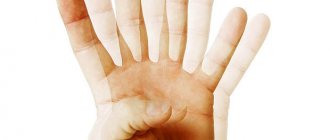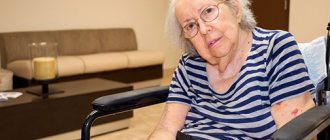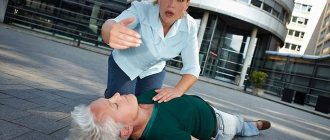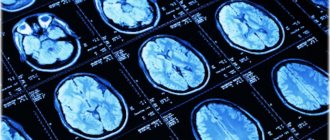Unfortunately, a disorder such as stroke is very common. And if previously older people suffered from damage to the blood vessels of the brain, today young people also turn to specialists for help. In our information article we talk about the consequences of the disease, in particular about strabismus and how to restore vision.
In this article
- What is a stroke?
- Types of lesions
- What are the causes of stroke?
- What are the symptoms of a stroke?
- What are the consequences of a stroke related to the visual organs? How to recover? What will be the treatment?
- How to treat strabismus during a stroke?
- What does drug treatment include?
- Gymnastic exercises for the treatment of strabismus
- Surgery to treat strabismus after stroke
- Recommendations
What is a stroke?
Experts call a stroke an acute disturbance of blood circulation in the brain, which entails focal damage. Unfortunately, every year the disease becomes younger and more common: people after thirty years of age often experience a stroke. It manifests itself as sudden weakness in the limbs and disturbance of consciousness, as well as facial asymmetry, impaired speech and vision, and other signs that we will discuss below. It is important to diagnose this disease in time and begin treatment. Will the body be able to fully recover? It is difficult to answer this question unambiguously, since it will depend on physiology and age, as well as a number of other factors. In any case, treatment is necessary to correct cardiac, respiratory and metabolic disorders and combat cerebral edema. Also, a person after a stroke needs specific pathogenetic, neuroprotective and symptomatic therapy that will prevent complications.
Types of lesions
Experts distinguish two types of stroke - ischemic and hemorrhagic. They are radically different from each other, as they have different mechanisms of action and principles of treatment. So, the first type can be called a cerebral infarction in another way. What happens at this moment? The work and patency of the cerebral arteries is disrupted, which leads to prolonged ischemia and changes in brain tissue in the area of the blood supply to the affected artery.
In turn, a hemorrhagic stroke is provoked by a pathological (atraumatic) rupture of a cerebral vessel with hemorrhage into the cerebral tissue. Neurologists summarize that ischemic stroke most often affects people after fifty years of age, while hemorrhagic stroke can also occur in the younger generation. For example, at the age of 40 years.
What are the causes of stroke?
What is the cause of stroke? Given the statistics, there may be various reasons. For example, arterial hypertension or atherosclerosis. Plus, unhealthy diet, dyslipidemia, alcoholism, severe stress, etc. Heredity also plays an important role.
An ischemic stroke develops as a result of a disruption in the passage of blood through one of the blood vessels supplying the brain. For example, due to occlusion of the carotid arteries. The cause of a sharp deterioration in cerebral blood supply may be a minor vascular spasm or thromboembolism. In turn, the cause of the latter is often cardiac pathology. The occurrence of the second type of stroke, that is, hemorrhagic, may be associated with the presence of various vascular pathologies. For example, cerebral atherosclerosis, systemic vasculitis and collagenosis. Rarely, but there are still cases when this type of stroke directly depends on blood clotting or incorrect therapy with anticoagulants and fibrinolytics.
Diagnosis of stroke on the right side
When the first symptoms appear, you need to undergo an immediate examination, this also applies to patients at risk. Hemorrhagic and ischemic stroke of the right hemisphere is diagnosed by a neurologist, establishing focal signs of hemorrhage. If necessary, an appointment with a neurosurgeon is made. To obtain a complete clinical picture, identify the type of pathology, and the size of the affected tissue area, the following is prescribed:
- Lipidogram - analysis of cholesterol levels.
- MRI.
- Study of blood parameters - coagulability, composition, chemistry, general characteristics.
- CT scan.
- Analysis of urine.
At the same time, examinations are prescribed to predict the possibility of hemorrhage based on the state of the main body systems:
- X-ray examination of the chest.
- Ultrasound - vascular system, heart muscle.
- ECG.
- Blood pressure - monitoring.
Based on the results of a comprehensive examination, the neurologist gives a prognosis for the treatment of stroke in the right hemisphere of the brain and prescribes an appropriate medication regimen.
What are the symptoms of a stroke?
Of course, the symptoms of ischemic and hemorrhagic stroke are different, but they also have common signs. First of all, it is worth noting that the first type of disease develops more slowly than the second. At first, focal and general cerebral symptoms signal a stroke. In turn, the hemorrhagic type develops more rapidly, begins with general cerebral manifestations, against the background of which focal symptoms appear and progressively increase. In the case of subarachnoid hemorrhage, meningeal syndrome is typical.
Now about all the symptoms in more detail. By general cerebral pain we mean severe headaches, nausea, and often loss of consciousness. Focal signs depend on where in the brain the stroke occurs. If in the carotid artery, then there is a decrease or complete loss of muscle strength in the limbs of one side of the body. Homonymous hemianopsia is also possible, that is, loss of the same halves of the visual fields of both eyes. In some cases, photopsia (false appearance of light flashes, sparks, luminous lines) and visual hallucinations are noted. With a stroke in the vertebrobasilar area (it forms the right and left vertebral arteries that supply the cerebellum, trunk and occipital lobe of the brain), dizziness, diplopia, visual field defects, hearing impairment, oculomotor disorders, dysphagia (inflammation of the oral cavity, pharynx of the esophagus) are noted. Since without medical help it is impossible to understand where exactly the stroke occurred, one should rely on general cerebral signs. Once the diagnosis is made, surgical treatment is necessary.
Symptoms of diplopia
With diplopia, in addition to the superimposition of two images on top of each other, dizziness and nausea may occur. Since the patient loses binocular vision, it is difficult for him to navigate in space and assess the position of surrounding objects.
Depending on the root cause of diplopia, its nature also changes. Thus, when the rectus muscles of the eye are damaged, parallel doubling occurs. If the oblique muscles are damaged, the images are located on top of each other. The eye deviates in the direction opposite to the location of the affected muscle. The degree of deviation may vary. Sometimes a forced head position is added, in which the patient tilts or turns his head in a certain way to eliminate diplopia.
If diplopia occurs against the background of meningitis, an infectious process, an intracranial tumor, vascular abnormalities of the brain, or a fracture of the base of the skull, then in addition to double vision, there are characteristic symptoms of a particular pathology. It should be noted that diplopia occurs in the early stages of botulism, while with diphtheria it appears only at the height of the disease.
How to treat strabismus during a stroke?
Since strabismus after a stroke is one of the most common problems, the question of how to cure strabismus after a stroke becomes the most pressing. To restore visual function after a stroke, there are several time-tested techniques. These include:
- drug therapy;
- therapeutic and preventive gymnastics for the eyes;
- operation.
What the treatment will be is decided by the ophthalmologist together with the neurologist, taking into account the type of disease, how the stroke progresses, the individual physiological characteristics of the patient and many other factors. In some cases, a comprehensive approach is used to achieve maximum recovery. Below we will talk about each method of treating strabismus after a stroke.
Surgery
If the pathology is caused by disturbances in the functioning of the visual organs after injuries or in other cases, then surgical intervention is used to radically solve the problem. There are two ways:
- Recession of the eye muscle is its weakening through movement.
- Resection of a muscle is a reduction in its length.
The same operations are performed in the treatment of strabismus. They have been practiced in ophthalmology for several decades and show effective results.
What does drug treatment include?
Despite the great development of medicine, there are still no special drugs aimed specifically at restoring vision after a stroke, but there are drugs that can solve local problems. The effect of medications after a stroke is usually aimed at the following results:
- normalization of blood flow in the brain;
- regeneration of rheological properties of blood;
- elimination of metabolic disorders;
- reducing the volume of necrotic tissue;
- normalizing oxygen delivery to the brain and reducing the sensitivity of cells to its lack.
Using such an integrated approach, it is possible not only to minimize the number of necrotic neurons, but also to restore some sections that were slightly damaged. The ophthalmologist also recommends taking medications aimed at relieving tension and blockage of blood vessels, which will help regulate blood supply. But usually such drugs are used in the first few hours after a stroke in order to eliminate focal signs as soon as possible.
Vasoactive drugs are used to reduce the volume of necrotic tissue. If the patient has increased sensitivity of cells to hypoxia, then vitamin E is prescribed. It is a powerful antioxidant.
What to do in case of double vision?
Diplopia, which is a consequence of a stroke, is logical to treat by eliminating the source of the problem. That is, the patient must take a responsible approach to undergoing a rehabilitation course, which includes special gymnastics, physical and drug therapy. Sometimes surgery is suggested.
Drug treatment
REFERENCE! The doctor will not additionally prescribe special ophthalmic medications, since they are not necessary. They will not help in any way with diplopia due to a stroke.
Medicines should improve cerebral circulation and enhance metabolic processes in the body:
- Vinpocetine. This medicine is prescribed for acute cerebrovascular accident due to stroke. Taking it helps saturate the brain with oxygen and reduce blood pressure. But the medicine also has side effects.
- Instenon. The drug affects the vasomotor center, which stimulates blood movement, dilates blood vessels and relieves spasms. It contains 3 active components: etamivan, hexobendine and etophylline.
- Mexidol. This drug increases the resistance of brain cells to hypoxia (lack of oxygen), which helps improve memory and thought processes.
Taking antiplatelet agents is also important. This drug group is prescribed to people who have suffered a stroke and have increased blood viscosity. Drugs thin the blood and prevent blood clots:
- Aspirin. The simplest drug that perfectly thins the blood. But, like all medications, it has a number of contraindications.
- Ticlopidine . Prescribed for the prevention of thrombosis.
Drugs from the group of neurometabolic cerebroprotectors are prescribed. They contribute to the activation of metabolic processes in the patient’s nervous system. Known neuroprotectors:
- Oxybral . Helps increase the uptake of oxygen by cells and reduces vascular resistance, which promotes the flow of useful substances to brain neurons.
- Sermion. Strengthens the transmission of impulses between neurons of the brain, reduces blood pressure.
IMPORTANT! Do not self-medicate. Any medications are prescribed by the attending physician.
Gymnastics for the eyes
To restore body functions impaired after a stroke, therapeutic exercises are required. When diplopia occurs, additional exercises for the eye muscles are added.
A short set of simple exercises for diplopia:
- Move your eyes up and down, holding each position for a couple of seconds.
- Move your eyes right and left, holding each position for a couple of seconds.
- Move your eyes diagonally.
- Perform circular movements with your eyes. First clockwise, then counterclockwise.
- Find two points. One of them should be no further than 30 meters from you, the second should be at a distance of at least 3 meters from you. Look alternately at the near and far point. Take your time with this.
- Close your eyes tightly for a few seconds and then slowly open your eyes.
The gymnastic complex is carried out in a lying position if the patient is at the initial stage of rehabilitation after a stroke. Or sitting, if motor functions are more or less restored.
Before starting the exercises, you should give your eyes a little rest by blinking frequently.
While doing the exercises, do not twirl naked. All movements are performed only with the help of the eyes. Each exercise should have 5 to 10 repetitions.
If during gymnastics you feel discomfort or extreme fatigue, stop immediately.
IMPORTANT! Any exercises from the complex of therapeutic exercises must be approved by a doctor.
Gymnastic exercises for the treatment of strabismus
This method is certainly one of the simplest, but quite effective. Especially when it comes to strabismus. However, you need to be patient, since eye gymnastics is not the fastest method of restoring vision. The ophthalmologist will tell you more about the exercises that are necessary after assessing the situation. It is worth noting that in most cases, gymnastics only relieves tension from the eyes, eliminates redness and burning, but cannot completely restore vision. It is recommended to train not only the visual organs, but also all parts of the body that have atrophied as a result of the stroke.
Surgery to treat strabismus after stroke
Often, for strabismus after a stroke, doctors resort to surgical intervention. It is important to understand that the operation will not eliminate the causes of strabismus and the consequences of a stroke, but will return the eyes to their natural position and reduce the risk of diplopia, that is, double objects, so that a person can normally perceive the world around him. At the moment, there are several types of elimination of strabismus after a stroke. But what type of operation the specialist chooses will depend on the type of strabismus and the general condition after the stroke.
Treatment of diplopia
Many patients with this disorder ask the question: is it possible to get rid of such unpleasant manifestations forever? After all, diplopia interferes with many types of activities - it is impossible to work with documents or at a computer, or drive a car. Ophthalmologists say that diplopia can be cured, but a successful result depends very much on the cause that caused this eye pathology. In modern ophthalmology, several methods are used.
Recommendations
Stroke is an extremely serious disease that leads to damage not only to the visual organs, but also to other organs. Therefore, immediate contact with specialists at the first signs of a stroke is of paramount importance. It is also important to note that an independent disease such as an eye stroke often occurs. In this case, a separate course of treatment is prescribed. The recovery period will directly depend on how quickly medical care was provided and, of course, on the degree of damage and the age of the patient. Today, strabismus after a stroke can be cured in various ways or using an integrated approach. What kind of therapy will be determined solely by the ophthalmologist.
Rehabilitation
The duration and quality of recovery after illness is difficult to predict. It all depends on the severity of the damage to brain structures and the characteristics of the body. Comprehensive rehabilitation under the supervision of specialists is the most important factor that helps to get rid of functional disorders. Recovery at home is possible, but in this case there is no chance of comprehensive application of effective measures for the patient:
- Therapeutic, restorative massage is necessary to restore lost motor function of the limbs on both the right and left sides. Manipulations are carried out with increasing intensity, gently influencing the muscles, relaxing them, relieving tension and painful spasms.
- Emotional and physical peace - the victim must be in an atmosphere that stimulates the desire, the ability to be treated.
- Exercise therapy under the guidance of experienced rehabilitation therapists - this approach allows you to get rid of paralysis, restore normal coordination of movements, restore lost functions, and fully control the body.
- Dietary diet - it is developed by specialists, excluding dangerous factors that provoke an increase in cholesterol levels and the appearance of plaques in blood vessels.
- Quitting smoking, drinking alcohol and drugs.
- Concomitant treatment of chronic diseases that negatively affect the vascular system.
- Sessions with a neurologist, physiotherapist, psychologist.
If rehabilitation occurs at home, a patient who is paralyzed needs to change body position every 2 hours. This will minimize the risk of bedsores and will not allow the muscles to quickly atrophy in combination with massage. It is necessary to organize a flat surface, without bumps or folds of the bed.
After an illness, a doctor may recommend visiting the pool to strengthen muscles and immunity, and get rid of cramps. It is useful to master breathing exercises that saturate the blood with oxygen. Walking will help you quickly restore your physical shape, strengthen your muscles, cope with shortness of breath, and get rid of excess weight.











